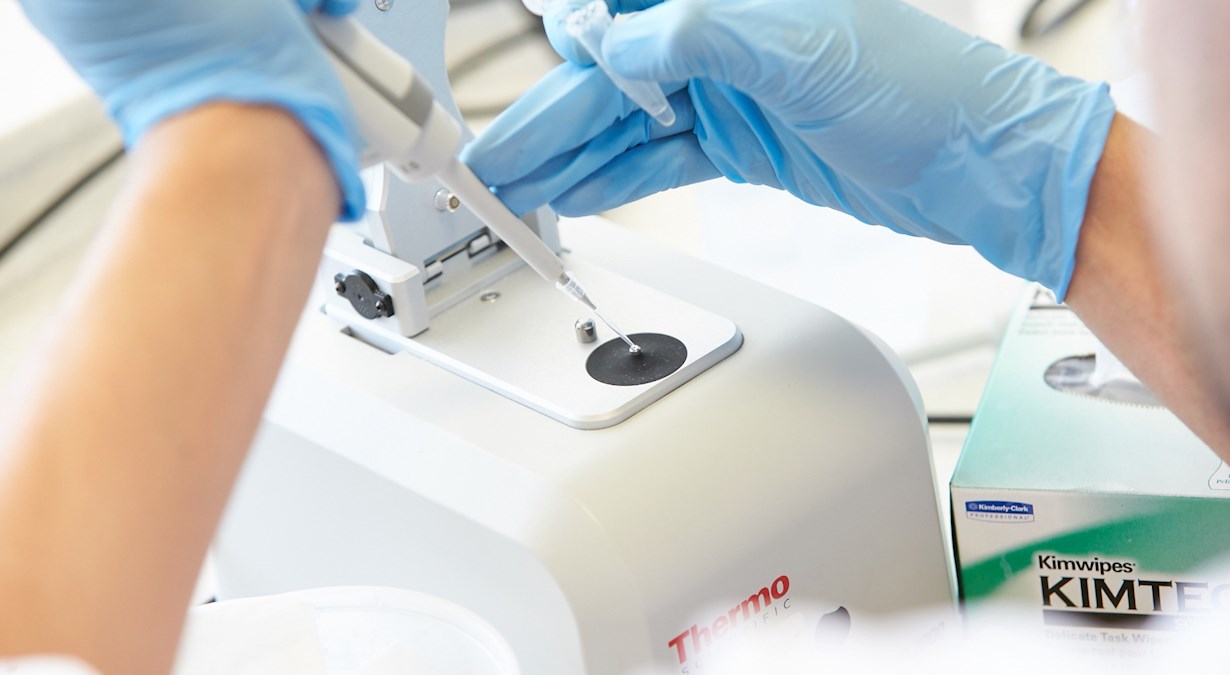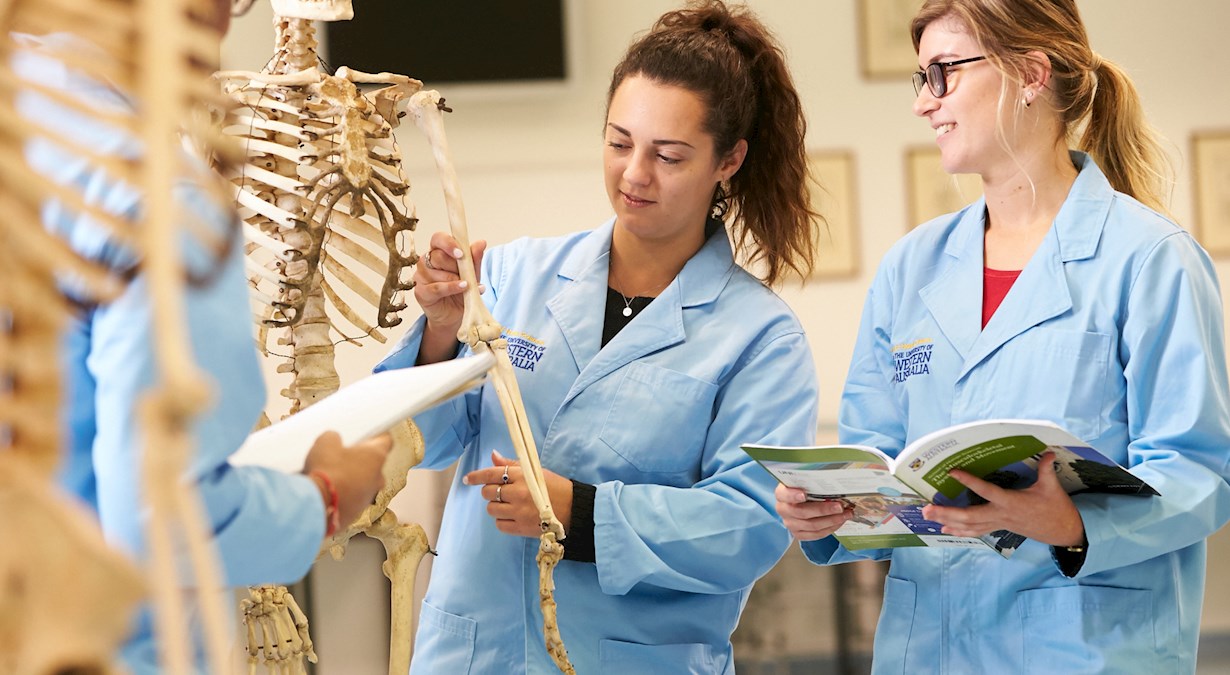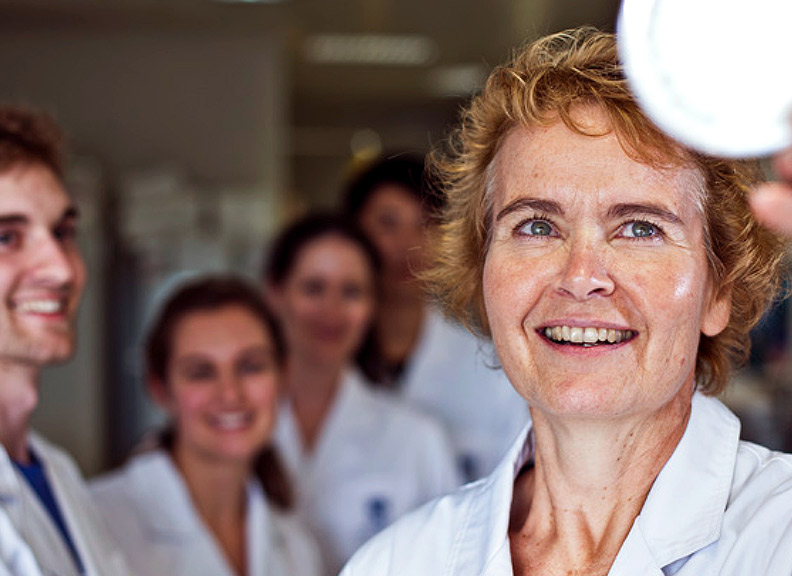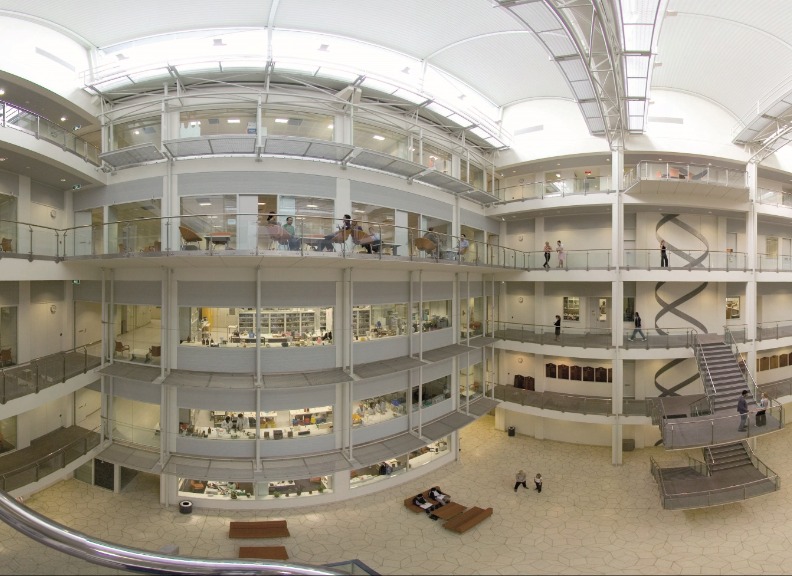
-
Highlights
-
Governance
-
Chancellor
-
Vice-Chancellor
-
Executive
-
History of the University
-
Schools
-
Campuses
-
Complaints
-
Official publications
-
Communications and marketing
-
Working at UWA
FACILITY
Bayliss Building
Cutting-edge facilities enable world-class research and study
The Bayliss Building is an impressive five-storey facility that's the largest and most technically complex building on our campus. Home to the School of Molecular Sciences, the building was named after Emeritus Professor Sir Noel Stanley Bayliss (1906-1996), an eminent Australian chemist whose name was given to the mineral 'baylissite'.
It houses a range of facilities to support world-class research and teaching, and labs have been built on every level to suit various curriculum requirements as students progress. Inside the 17,000-square-metre building is an impressive DNA double helix design on the west wall of the central atrium and an intricate Penrose tiled floor.
A dominant architectural feature is the large, naturally lit, central atrium which allows views from all central rooms. It also increases the internal transparency of the building and allows the interaction and relaxation of hundreds of academic, research, postgraduate and support staff that use the building.
Bayliss Building
- The west wall of the central atrium features a scored stainless steel plate of the double helix structure of DNA which climbs to a height of 20 metres.
- The tiling of the central atrium floor has a remarkable Penrose pattern of five-fold symmetry, long considered to be impossible, but now recognised to be of importance in mathematics, crystallography and materials science.
- The five-storey building is a thriving centre for world-class research, with advanced labs on every level.
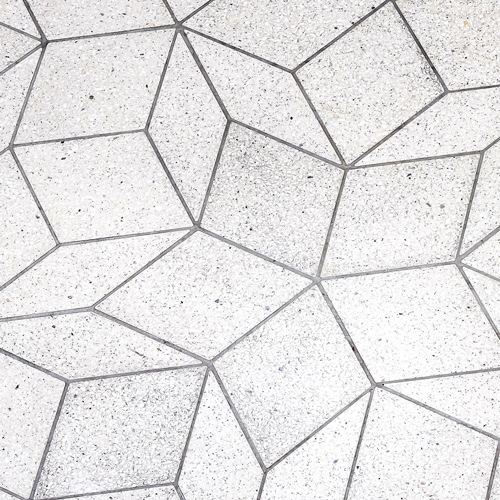
Research
Contact the School of Molecular Sciences



































